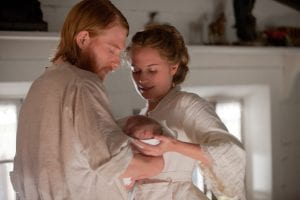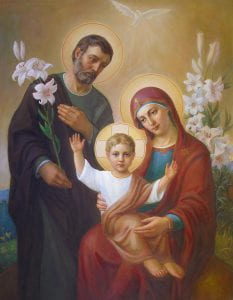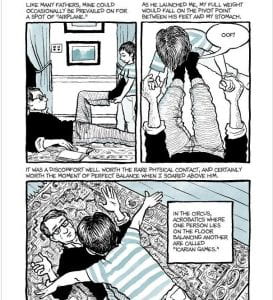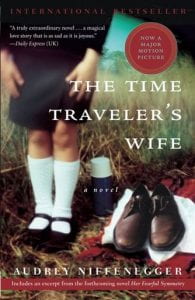After reading Anna Karenina, I thought it would be interesting if I read other books by Leo Tolstoy. I recently read two of his short stories from The Death of Ivan Ilyich & Other Stories: The Diary of a Madman and Alyosha the Pot.
The Diary of a Madman is about a man (Fedenka), who throughout life has momentary panic attacks which eventually causes him to have an existential crisis. His first panic attack began at the age of 5 when his nanny and housekeeper argue in such a way that it terrifies him and forces him to remember the moment when he saw a boy get ruthlessly beaten in front of him. This memory triggers his panic attack, causing him to uncontrollably sob in despair. He mentions another moment in his life when his aunt tells him and his brother (Mitya) the story of Jesus Chris, in which he breaks down and has another fit again and beats his head against the wall because of the suffering of Jesus on the Cross. As time carries on, he stops having his sudden outbursts until the day he is on his way to buy a new estate. It is during this time when he is away from home and his family and in the company of a male servant that Fedenka has an existential crisis which leads him to question the purpose of his life and this leads him to have an epiphanic moment.
I also read another book from his collection, Alyosha the Pot. Alyosha gained his nickname as he dropped a pot of milk when his mother sent him to the deacon’s wife, resulting in him to get a beating from his mother and afterwards he was teased by the children in his locality. Alyosha worked hard from a young age as studying did not come easy to him. When his father scolded him, he did nothing but listened. After his brother was taken as a soldier, Alyosha was taken to work under a merchant and was told to be “uncomplaining, greedy for work.” Alyosha started living at the merchants’ and began to do all the work they set him and was truly, uncomplaining despite all the work being heaped on him. Alyosha constantly did extra work so that he could get more money for his father and would sacrifice eating meals. While he spent his time working, he fell in love with a cook named Utsinya. However, his father forbids the marriage. Alyosha has an accident in which he is badly injured and passes away after a couple of days but not before having an epiphany in the company of the Priest.
In both stories, both main characters have epiphanic moments. In the first story, The Diary of a Madman, Fedenka encounters God during his fits and realizes that even though he has achieved everything in life (he has an estate, a wife, children) he has no hope for his future, his faith in God is what makes him realize that it is better to live simply. Similarly, in Alyosha the Pot, Alyosha who unlike Fedenka has not been able to achieve anything, is also without hope until he realizes his faith in God is enough to help him die a satisfied man.
The lack of hope is specifically shown in The Diary of a Madman when Fedenka is on his way to the new estate, his anxiety and fear of change worsens. The very reason as to why Fedenka is on his way to look for a new estate is because he is looking for more materialistic achievements. However, when he confronts himself in the new estate through his fit, he feels let down as God does not reveal himself to him, leaving him to feel even more hopeless as though there is no one he can turn to. But, when Fedenka falls ill, he turns to God, and due to the lack of energy, he decides to go to Church and begins to pray as a habit. He begins to fill his life with reading novels, magazines rather than estate managing and he realizes that it is better to lead a simpler life and that he personally is more content. It isn’t until he is truly lost, has stopped aiming for materialistic achievements and almost faces death when he realizes that he should have faith in God no matter the outcome. Unlike Alyosha, Fedenka is on his way to realizing God, what he has realized is that it is important to lead a simpler life with faith in God.
In contrast, in Alyosha the Pot, Alyosha lives a simple life and since he doesn’t have the intellectual capacity, he can do nothing better and is forced to be a merchant and is forced to keep his dreams of marriage and romance aside. Nevertheless, Alyosha finds solace in God and realizes that people cannot just keep living, “Can we just keep on living? It’s going to be” He realizes that everything would have come to nothing if he had married the cook, as material achievements would not have given him the satisfaction he craves. Thus, Tolstoy is portraying Alyosha to be at a higher spiritual level in contrast to Fedenka because he is able to realize that marriage is not able to provide him with fulfilment. So, when Alyosha passes away, Tolstoy mentions that “He got surprised at something, stretched out, and died” indicating that God was there to receive him to Heaven. His last words, “as it is good here, provided you obey and do not hurt anyone, so it will be good there” is a paraphrasing of the Lord’s prayer, “Your will be done, on earth as it is in heaven.”
This theme of having faith in God is also portrayed in Leo Tolstoy’s book Anna Karenina, the idea of faith is specifically shown in the character Levin. In Anna Karenina, Levin like Fendeka is left hopeless even though he has achieved several of his materialistic goals (having an estate, servants, money) as his true love, Kitty has rejected him. Despite being turned away, Levin turns to God and comes to realize the importance of leading a simpler life. Thus, he treated the peasants and serfs he worked with like ordinary people rather than treating them as though they were inferior. In fact, this is very similar to Fedenka, who too begins to look forward and is hopefull to lead a simpler life, and begins treating the people around him as equal. As Levin kept his faith in God, he is later able to find happiness in the simple things he did with his wife Kitty and their child. Perhaps consequently, the last image of the movie of Levin and his family is similar to the image of the Holy Family, Mary Joseph and Baby Jesus.


















